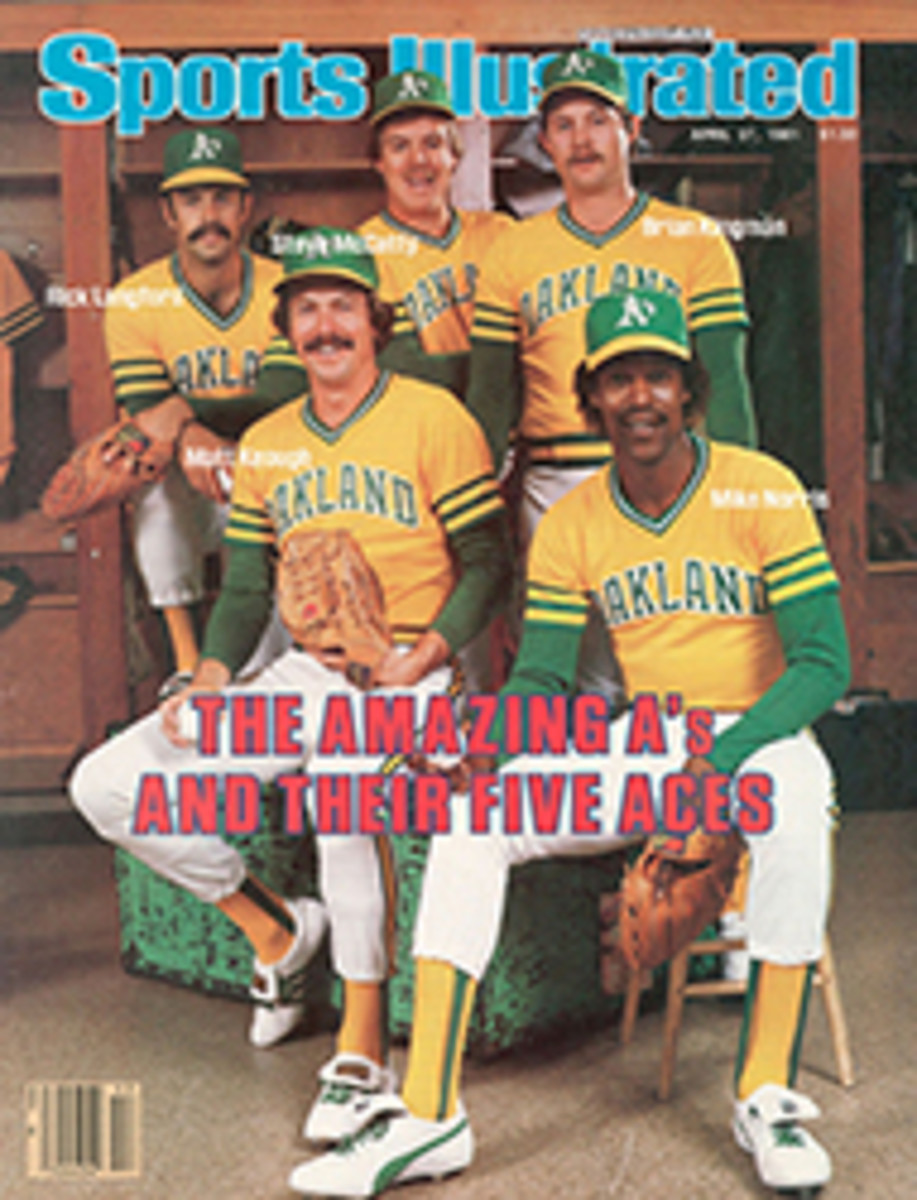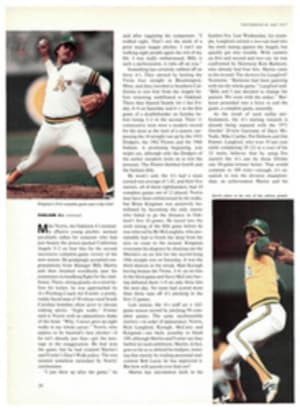
WHEN THIS WILD AREA BECAME A PARK, ANIMALS LEFT AND PEOPLE SUFFERED
Most people think parks are invariably good for wildlife. After all, look at all those bears and bison in Yellowstone; if the park didn't exist, there certainly would be a lot fewer of them. If that's true of Yellowstone, it must be true for other parks, even if on a much smaller scale, right?
That's what I once thought. So I wasn't distressed when I learned that the city of Seattle wanted to convert the land next to my home into a park. In fact, I thought it was a good idea; a park certainly is preferable to condominiums.
My home is on Alki Point, a part of Seattle that juts into Puget Sound. Seattle's first white settlers landed here, and one of the city's oldest families once lived in a mansion on the hillside above where my house now stands. Below the mansion was an arboretum with a small pond fed by natural springs. It was a botanical showcase around the turn of the century and was even featured in a color illustration on the cover of the 1911 Lilly seed catalog.
When my wife and I moved to our home in 1967, the mansion was long gone. The arboretum had become a nearly impenetrable thicket of brush, blackberry vines and bamboo. The brambles discouraged human entry, but they provided an ideal habitat for a surprising variety of wildlife. California quail, ring-necked pheasant, raccoons and rabbits all called the old arboretum home, and scores of mallards frequented the grassy strip along the beach in front.
It's always a pleasure to encounter wildlife in the middle of a big city, and we felt especially fortunate to be living next to so much of it. Most of Alki Point now is crisscrossed with busy streets lined with houses, apartment buildings and business establishments, but the old arboretum had remained a quiet oasis for wild creatures. There they had all the essentials: cover, food and water.
The quail seemed most numerous, and often we would find them in our backyard or driveway. Only rarely did we ever actually see chicks, but early one spring morning I surprised a mother quail in our driveway with 18 fuzzy chicks in tow. Our whole family watched until the mother led them back to the safety of the blackberry vines. I suppose some eventually fell prey to the stray cats that roamed the neighborhood, but the number of quail that always seemed to be around gave assurance that their reproductive rate was sufficient to keep ahead of the cats.
The pheasants were much more secretive and seldom left the sanctuary. Occasionally we would catch a fleeting glimpse of one through a gap in the brambles, but the most spectacular evidence of their presence would come each spring, before the nesting season. Then, in the early evenings, we would hear the cock pheasants calling loudly.
For some reason the raccoons seemed to prefer foraging in the neighborhood on the far side of the arboretum, but one night I discovered a fat, old one in our yard. Its eyes were like a couple of tiny full moons in my flashlight beam.
The rabbits were from domestic stock gone wild; there were white ones, gray ones, buff-colored ones and mottled ones, and our children named them after the rabbits in Watership Down.
We enjoyed the company of our wild friends for nearly a decade. The family that owned the abandoned arboretum had sold the property to the city for a park in 1971, but the land was left untouched. Then, early in 1976, the city announced that planning for the new park would soon get under way.
Because few people were aware of the sizable wildlife population in the arboretum, I wrote to the city's superintendent of parks and recreation, urging that every effort be made to preserve the habitat, particularly the brush cover that is essential to the survival of pheasant and quail. I also suggested that the flow from the hillside springs be combined into a single stream, which could be allowed to debouch naturally into Puget Sound. (I had a selfish motive, secretly scheming to stock the stream with cutthroat trout in hopes of developing a run that I could fish in my yard.)
The response was typical. A letter signed by an underling said the city was "in the process of gathering information on the park, which will be compiled into an environmental analysis. Your concerns for the quail and pheasant populations as well as for the improvements to the hillside streams are well founded and will be addressed in this environmental analysis."
Well, maybe they were. I don't know, because I never saw the "environmental analysis," not even at several meetings with park department officials. But developments were to show only too well how the department chose to address my "well founded" concerns.
Biology students from two local high schools volunteered to help work on the park as a community project. In October 1976, with the department's full blessing, the students descended on the old arboretum with machetes, hatchets, scythes and rakes, and began clearing away the brush, blackberries and bamboo. The damage was severe.
The next morning, I found a rabbit on our front porch. Another was in the flower bed and another in the yard. Flushed from their havens in the brush, they had sought refuge around our house. The cats quickly closed in, and within a few days all the displaced rabbits had disappeared.
The quail and pheasant were similarly exposed, and since that morning we've never seen another quail or heard a cock pheasant calling. Nor has another raccoon appeared in our yard.
The students who cut the brush were well intentioned, and they are not to blame for what happened. But I've always thought it ironic that biology students were the unwitting accomplices in the extermination of a thriving colony of wild birds and animals.
The following winter the park department brought in a small bulldozer to scrape away the topsoil in the old arboretum and lay bare the clay beneath. But the clay was saturated by heavy rains and runoff from the hillside springs; it quickly became a quagmire and the bulldozer sank into it cab-deep. A much larger bulldozer was brought in to try to pull out the smaller one, but it became mired itself. Finally a vehicle that was large enough to retrieve a tank succeeded in pulling both of them free—leaving the arboretum looking like a World War I battlefield.
Undaunted, the park department restored a ditch along the hillside to collect the runoff from the springs and funnel it into a storm sewer. That, and the installation of a French drain, allowed the ground to dry out enough to be graded to a more or less level plain. Then it was sprayed with herbicides to discourage any comeback by the blackberries or the bamboo.
Grass was seeded, and tables, benches and litter barrels were installed. The ditch was left in place and the runoff still goes down the storm sewer instead of into Puget Sound. The park was dedicated on Aug. 1, 1979.
Since then it has attracted a great many people. Some began to scatter grain for the mallards. Soon, crows and pigeons discovered the handouts and moved in. Now mallards are rare, but crows and pigeons abound.
The park is a haven for another kind of life, too. At night the cars come. Their tires scream and their engines rumble as they race along the beach front. When they tire of racing, they sometimes go into the park itself—even though there are no roads and motor vehicles are prohibited. They drive onto the grassy field, which once was covered with brambles, and dig ruts in its surface. Two trees have been among the casualties.
Sometimes the damage is much worse. So far, at least two cars and a motorcycle have plunged over the bulkhead the city built to keep the sea from intruding on its new park. The motorcyclist won't be back; they found his body in Puget Sound.
The mornings disclose deep scars in the grass. Cans, bottles and other garbage are strewn on the grass where quail once hid their chicks and cock pheasants called.
So don't tell me that parks are always good for wildlife. I know of one that isn't.

